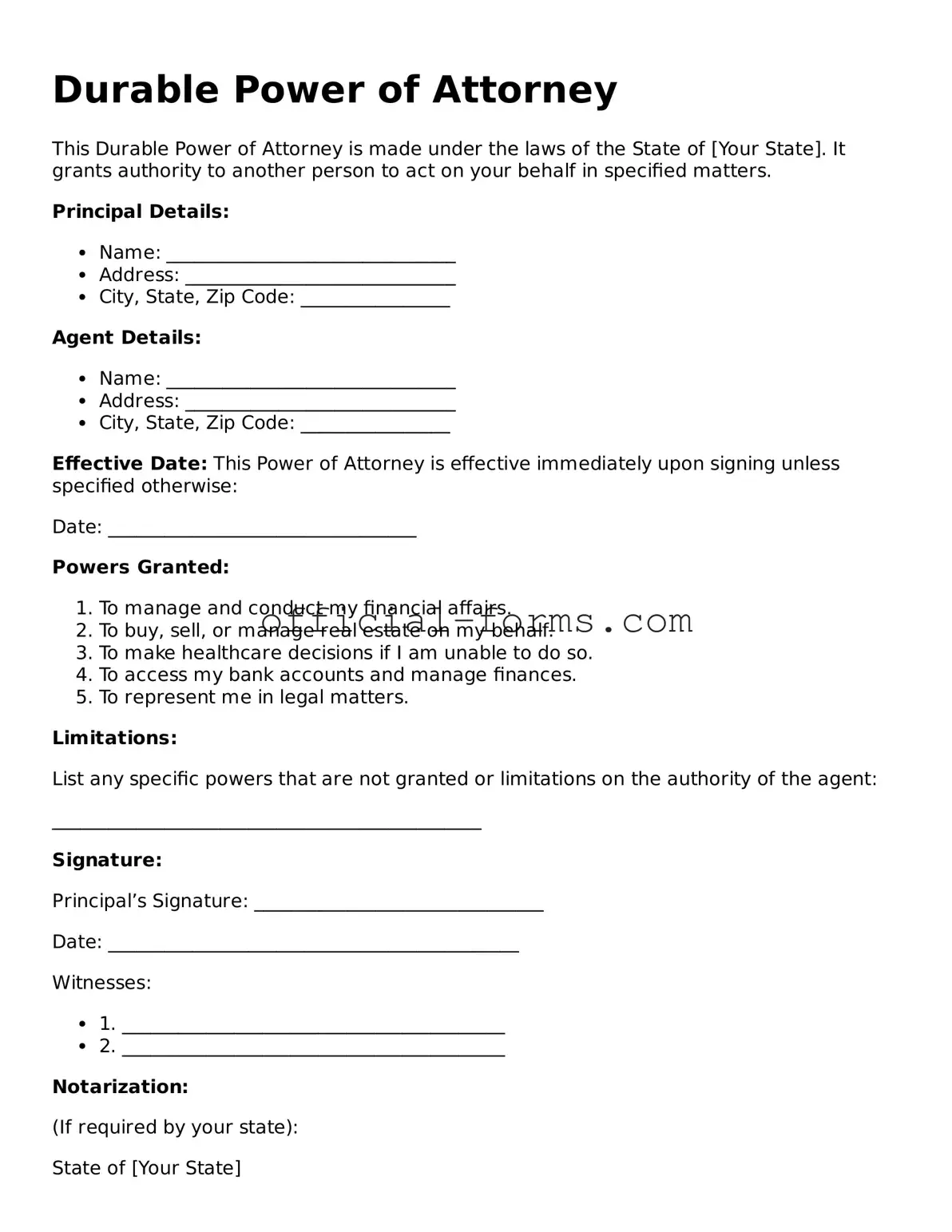Filling out a Durable Power of Attorney (DPOA) form can be a straightforward process, but many individuals make common mistakes that can lead to complications later on. Understanding these pitfalls can help ensure that your wishes are clearly expressed and legally binding.
One frequent mistake is not specifying the powers granted. A DPOA can cover a wide range of financial and legal decisions. If the form lacks clarity on what the agent can do, it may lead to confusion or disputes. Clearly outlining the powers helps avoid misunderstandings.
Another common error is failing to date the document. A DPOA should always be dated when signed. Without a date, it can be challenging to determine when the authority was granted, which may create issues if the agent needs to act on your behalf.
People often forget to sign the form in the presence of a notary or witnesses, depending on state requirements. Notarization or witness signatures add a layer of legitimacy to the document. Skipping this step can render the DPOA invalid.
Some individuals overlook the importance of choosing the right agent. Selecting someone who is not trustworthy or lacks the necessary skills can lead to poor decision-making. It’s crucial to choose someone who understands your values and can act in your best interest.
Another mistake involves not considering alternate agents. Life is unpredictable, and the primary agent may not always be available. Naming a backup ensures that there is someone ready to step in if needed.
Many people also neglect to review and update their DPOA as circumstances change. Major life events, such as marriage, divorce, or the death of an agent, can affect the validity of the document. Regular reviews help keep your wishes current.
Lastly, some individuals fail to communicate their intentions to the chosen agent. It’s important that the agent understands their responsibilities and your wishes. A conversation can clarify expectations and ensure that your decisions are honored.
By being aware of these common mistakes, you can fill out your Durable Power of Attorney form with greater confidence and clarity. Taking the time to do it right can save you and your loved ones from potential legal headaches in the future.
